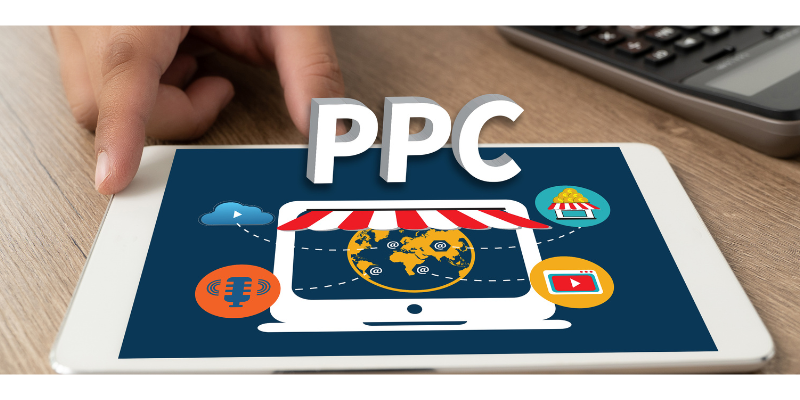Table of Contents
ToggleUnderstanding the relationship between Google Ads and SEO is crucial for any business looking to establish a solid online presence.
Every so often we get a call from a customer who says that he or she wants to rank on Google to stop spending money on ads.
This is not an isolated event, many entrepreneurs question whether they should continue investing in Google Ads after achieving a high ranking on Google search results.
The answer is not as straightforward as one might think. In this post, we’ll explore the dynamics of Google Ads and SEO, the benefits of maintaining both strategies and how they can work synergistically to elevate your online presence and boost your business growth.
Understanding the Basics of Google Ads and SEO
Google Ads, previously known as Google AdWords, is a pay-per-click (PPC) advertising platform that enables businesses to display ads on Google’s search results pages.

Advertisers bid on keywords relevant to their products or services, and when users search for those terms, the ads appear at the top or bottom of the search results.
This model ensures that businesses only pay when someone clicks on their ad, making it a cost-effective way to drive traffic to their website.
SEO, or Search Engine Optimization, enhances your website and its content to rank higher in organic search results.
This involves various strategies such as keyword research, content creation, link-building, and making technical adjustments to improve your site’s visibility.
The goal of SEO is to attract organic, unpaid traffic from search engines, which can lead to long-term benefits without the ongoing costs associated with paid ads.
While Google Ads and SEO operate differently, they share a common goal: to increase your website’s visibility on search engines.
Google Ads offer immediate results, allowing you to reach potential customers quickly, whereas SEO focuses on building a sustainable online presence over time.
Both strategies are integral components of a comprehensive digital marketing plan, and when used together, they can maximize your reach and impact.
Understanding these basics sets the stage for why maintaining a balance between Google Ads and SEO is crucial for your business’s online success.
Leveraging the strengths of both can provide immediate visibility while also fostering long-term growth, ensuring a robust and resilient digital presence.
The Role of Google Ads in Boosting Immediate Visibility
Google Ads offer a unique advantage for businesses seeking immediate visibility.
Unlike SEO, which may take months to deliver noticeable results, Google Ads can get your business noticed within hours.

This immediate exposure is invaluable, especially for new ventures or during the launch of new products or services.
In highly competitive markets, Google Ads enable your business to appear right when potential customers are searching for relevant terms.
For instance, if you’re running a restaurant in Miami, Google Ads can help you capture the attention of local customers who are actively looking for dining options.
These ads show up at the top or bottom of search results, ensuring your business remains visible even before your SEO efforts pay off.
Google Ads provides a level of control over targeting that organic search does not.
You can customize your ads based on location, demographics, time of day, and even device type, making your marketing efforts more precise and effective.
This level of granularity allows you to reach specific segments of your audience, increasing the chances of converting clicks into customers.
Moreover, the immediate data and insights from Google Ads campaigns can inform your broader marketing strategy.
Thorough keyword research will help you find out which keywords and ad copies perform best.
You can then refine your SEO and content marketing efforts, ensuring they align with what drives traffic and conversions.
This iterative process helps you stay agile and responsive to market changes, continuously optimizing your approach for better results.
The Impact of SEO on Long-Term Business Growth
SEO plays a pivotal role in ensuring the sustained growth of your business.
By focusing on high-quality, relevant content optimized for target keywords, SEO can attract organic traffic without incurring ongoing costs, making it a cost-efficient strategy over time.

A well-optimized website also fosters user trust.
Many consumers perceive organic listings as more credible than paid ads, which can lead to a loyal customer base and repeat visits.
One of the key advantages of a strong SEO strategy is its ability to adapt to changing market conditions and consumer behavior.
By continually updating and optimizing your content, you can maintain a strong presence in search results, even as trends evolve.
This adaptability helps safeguard your rankings against the frequent changes in search engine algorithms, ensuring that your website remains competitive.
Moreover, effective SEO contributes to brand authority.
When your site consistently ranks high for relevant searches, it reinforces your brand’s reputation as an industry leader.
This perception can enhance customer confidence, making them more likely to choose your products or services over competitors.
Additionally, SEO’s focus on creating a seamless user experience—from fast load times to mobile-friendly designs—can lead to higher engagement rates and lower bounce rates, further boosting your site’s performance.
However, it’s important to recognize that SEO is not a set-it-and-forget-it solution.
Continuous effort and adjustment are required to stay ahead of competitors and maintain your rankings.
This ongoing commitment ensures that your business remains visible and accessible to potential customers, providing a steady stream of organic traffic that supports long-term growth.
Why Stopping Google Ads Could Hurt Your Online Presence
Reducing or stopping your Google Ads campaigns once your SEO efforts yield high rankings can have unintended consequences on your online visibility and lead generation.
Without the reinforcement of paid ads, you risk losing significant search engine real estate to competitors who continue their ad spend, thus diminishing your overall market share.
This shift can lead to a drop in website traffic and a potential decline in sales, especially if your competitors capture the attention of users who would have otherwise clicked on your ad.
Moreover, the consistent presence of your brand through both organic listings and paid ads can significantly boost brand recognition and trust.

When users see your business repeatedly across different channels, it reinforces your credibility and keeps your brand top-of-mind.
This integrated approach can create a halo effect, where the trust and visibility gained through ads positively impact your organic rankings and vice versa.
Google Ads also offer invaluable real-time insights and data that can inform and enhance your SEO strategy.
The immediate feedback on keyword performance, user engagement, and conversion rates from your PPC campaigns can be leveraged to fine-tune your SEO efforts, ensuring that your organic content aligns with what is proven to drive results.
Additionally, the flexibility of Google Ads allows you to adapt quickly to market changes, seasonal trends, and promotional needs, something that organic search alone cannot achieve as rapidly.
This agility ensures that your business remains competitive and responsive to customer needs, maintaining a strong presence in the digital marketplace.
Google Ads and SEO: How They Work Together for Maximum ROI
When you integrate Google Ads with your SEO strategy, you create a powerful combination that can significantly boost your return on investment (ROI).
Google Ads provide instant visibility and traffic, while SEO builds a long-term organic presence.
Using data from your Google Ads campaigns, such as keyword performance and user behavior, can directly inform and refine your SEO strategy.
For example, the keywords that generate the most clicks and conversions in your ads can be prioritized in your SEO efforts, ensuring you’re targeting terms with proven success.
Additionally, the insights gained from user engagement with your Google Ads can help shape your content strategy, making it more aligned with what your audience is actively searching for.
This not only improves your SEO but also enhances the effectiveness of your paid campaigns, as your ads will resonate more with potential customers.
Landing pages optimized for both Google Ads and SEO can serve dual purposes, capturing paid traffic and converting organic visitors.
This dual approach ensures that your content is working hard across both channels, maximizing your investment.
The increased exposure from appearing in both paid and organic results can also elevate your brand’s credibility, making it more likely for users to engage with your business.
Combining the immediate benefits of Google Ads with the enduring advantages of SEO creates a robust and adaptable digital marketing strategy.
You will enhance your overall online performance and drive sustainable business growth.
Case Studies: Real-World Examples of Combined Google Ads and SEO Success
Consider the success story of a local SEO agency in Miami that sought to dominate its market.
They initially launched a Google Ads campaign targeting specific high-intent keywords like “SEO experts in Miami.”
This strategy yielded immediate inquiries and boosted property viewings.
Concurrently, the agency invested in local SEO, creating high-quality blog content and optimizing their website for search engines.
Over time, their organic rankings improved for the same high-intent keywords.
The synergy of both strategies resulted in a steady flow of leads and increased sales conversions, cementing their market position.
Another example is a fitness studio that combined Google Ads with a robust SEO strategy.
They used Google Ads to attract clients searching for immediate fitness solutions and special offers.
Meanwhile, their SEO efforts focused on ranking for local keywords and producing evergreen content, such as workout tips and nutrition guides.
This dual approach not only drove immediate traffic but also built long-term brand authority and customer loyalty.
Their website saw a significant uptick in organic traffic, which complemented the paid traffic, resulting in higher overall engagement and membership sign-ups.
These case studies illustrate the powerful impact of integrating Google Ads with SEO to achieve comprehensive digital marketing success.
Practical Tips for Managing Both Google Ads and SEO
Effectively managing both Google Ads and SEO requires a strategic approach to ensure they complement each other.
Start by conducting regular keyword research to keep your targeting relevant and up-to-date.
Utilize tools like Google Keyword Planner for PPC and other SEO keyword tools to identify high-value search terms.
Analytics are your best friend here—monitor performance metrics closely to determine which strategies are driving traffic and conversions.
Use this data to make informed adjustments to both your ads and organic content.
Investing in quality content is essential.
Create content that serves dual purposes—optimized for SEO to attract organic visitors while also designed to convert traffic from paid ads.
Ensure your landing pages are well-optimized and aligned with the keywords you’re targeting in both channels.
Regularly A/B test your Google Ads to identify what resonates most with your audience and apply these insights to your organic content strategy.
Don’t forget the importance of staying current with changes in both Google’s ad policies and SEO algorithms.
These updates can significantly impact your strategy, so keeping abreast of them will help you remain competitive.
Additionally, consider using retargeting strategies to capture visitors who land on your site through organic search but don’t immediately convert.
This way, you can continue to engage them through Google Ads, improving your chances of conversion.
By integrating these practices into your workflow, you’ll create a cohesive and dynamic marketing strategy that leverages the strengths of both Google Ads and SEO.
How to Measure the Success of Your Google Ads and SEO Campaigns
Measuring the success of your combined Google Ads and SEO efforts involves tracking key performance indicators (KPIs) that align with your business goals.
Start by monitoring traffic sources to distinguish between paid and organic visits.
Assess the conversion rate to see how well your strategies are turning visitors into customers.
For Google Ads, calculate Return on Ad Spend (ROAS) to determine the revenue generated for each dollar spent.
Additionally, regularly check keyword rankings to evaluate your SEO effectiveness.
Utilize tools like Google Analytics and Google Search Console to gather these insights and adjust your strategies based on the data.
This approach ensures you maximize the effectiveness of both channels.

